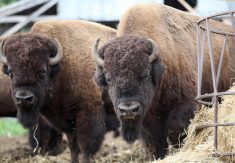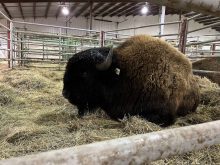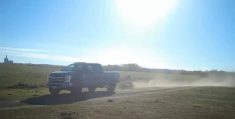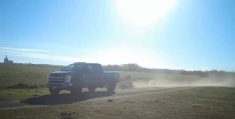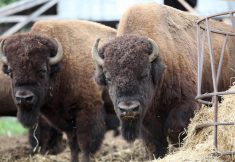Three producers gathered in front of the bannock and bison burger food truck at Bison Ridge Farms near Prince Albert, Sask., and talked shop.
Two of the three had been cattle producers before switching to the larger ruminants. The third has been in the bison business from the start, taking over from his father, who started raising the species in 1991.
All three are large producers by sector standards, grazing more than 110 cows, plus calves, yearlings and bulls. Each is an original member of the Canadian Prairie Bison co-operative, which started in 2001.
Read Also

Beware giving horses too much iron
Horses consuming too much iron through diet or water water can risk health problems like laminitis. Mineral testing forage and water is good practice for horse owners.
Why it matters: Bison producers often have to consider whether to market through a broker, a co-operative, or take on the task themselves.
Marketing bison is different from marketing cattle, which have well-established lines of supply and demand, greater mechanisms for price discovery and generally more scope and depth in the value chain.
Some bison producers choose to direct market, attend farmer’s markets, sell product online and use other methods to connect with consumers. Others, like those involved in co-ops, have banded together to give themselves stronger marketing chops.
David Christiansen was a third-generation cattle farmer before he switched to bison. He bought his first bison in 1998.
“The nice thing with the co-op is you’re not on your own,” he said. “We’re all together. So, Roger (our marketing manager) is always lining these loads up. All year round, every month, he’s looking for loads. I don’t know how else we’d do it if we didn’t have a co-op. It just works really well.”
Canadian Prairie Bison has about 100 members across Alberta, Saskatchewan and Manitoba. Most deals are made with wholesalers, although the co-op also sells jerky and pemmican under the Canadian Prairie Bison label.
“We’ve all got a voice in it,” said Gilbert Provencher, a bison farmer since 2000 who operates a bison feedlot with his son.
It’s a niche market. Provencher has tried direct marketing. It’s how he sold animals during his early years in the industry. In his best year, he sold 22 bison direct off the farm.
In comparison, a full load of bison, such as those organized through the co-op, is about 50 head. Provencher might sell more than twice that in a year with his current operation.
Some farms have done well with direct marketing. Bison Ridge Farms, which hosted the late-June field tour organized by the Saskatchewan Bison Association, has been particularly successful at it, event attendees heard.
But it’s also a lot of work. The labour required for direct marketing is an often-cited hallmark of the business model, even by its adoptees.
The co-op is meant to reduce that burden on producers. It’s an organizing force, arranging contracts for slaughter and paving the path to retail sales. It also reduces the cost for transport and vet inspections, since producers collectively fill a load to capture economies of scale.
“The bison industry isn’t consolidated like the beef industry. You still need to be economical,” said Rod Herzog, who is succeeding his father’s 1991 operation. “So that’s where working with your neighbours comes in; buying some animals to make sure you got a full load across the border, (be)cause transportation is $200 a head now to get them to the kill plants.”
Bison prices have steadied in recent years.
Two decades ago, Christiansen and Provencher said, they could only dream of the prices and interest in bison that they see today. They and Herzog’s father were some of the few near Prince Albert, Sask., who stuck out the low markets when the BSE crisis in beef spiraled to consume bison as well.
Their primary market is still the U.S., but bison are also processed in Alberta or Manitoba. Traffic to the south is driven by larger U.S. operations and population, raising the demand for bison.
Juggling act
The three producers also said co-op participation leaves more time to focus on the animals, rather than on marketing. That was one thing that drove Roger Provencher, a founder of Canadian Prairie Bison, to start the co-operative.
“What I found when I was trying to do both (producing and marketing) is that you can’t,” he said. “It’s tough to do both with any amount of animals, because when you should be outside doing your work, you should also be on the road doing marketing.”
After about six months of that balancing act, he decided something had to change. He has since sold his herd and today is a marketing manager for the co-op.
Running numbers
Co-op members do give up some benefits of direct marketing.
Roger Provencher acknowledged that direct marketers might be get a little more per-pound gross revenue, but they have to work hard for that premium.
“(That producer) might get a little higher (price), but he’s going to be out pounding the pavement every day in the cities and online and stuff like that, trying to find a sale for their stuff. Whereas here, the truck pulls in, they load up and they’re gone. The producer is done. Then my job begins.”




